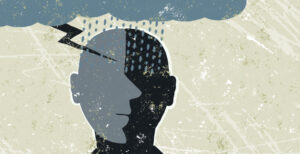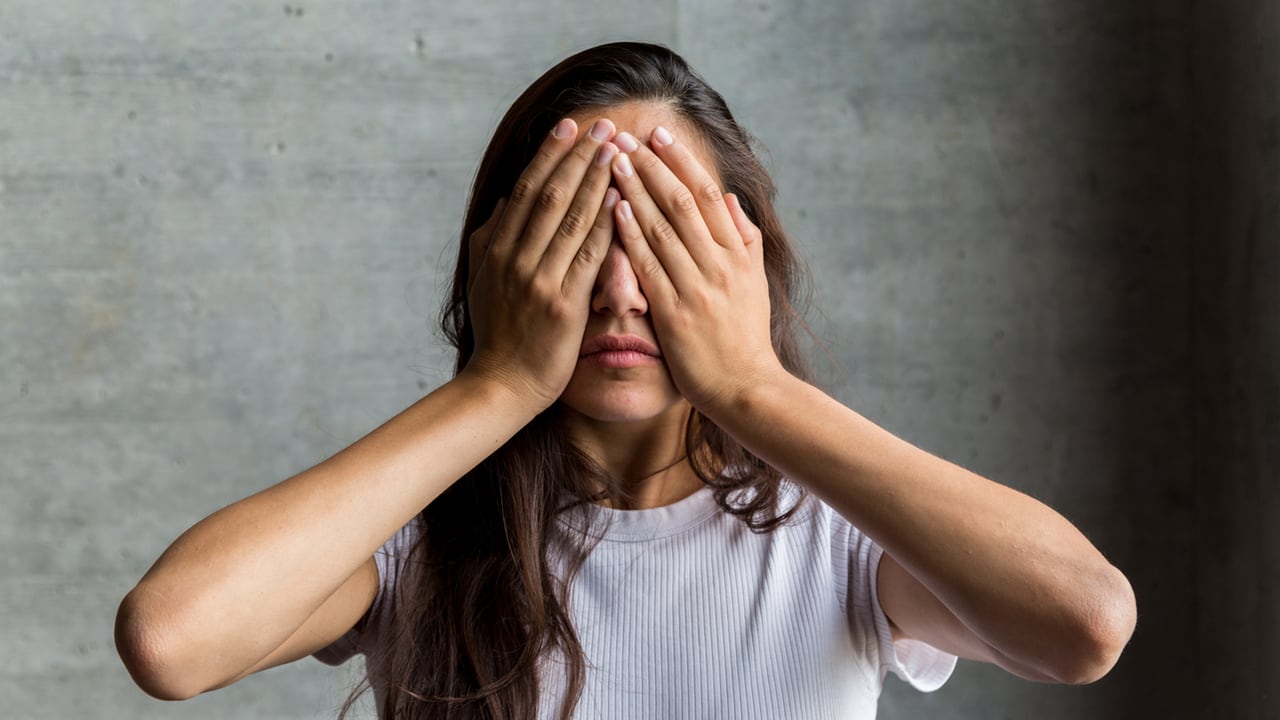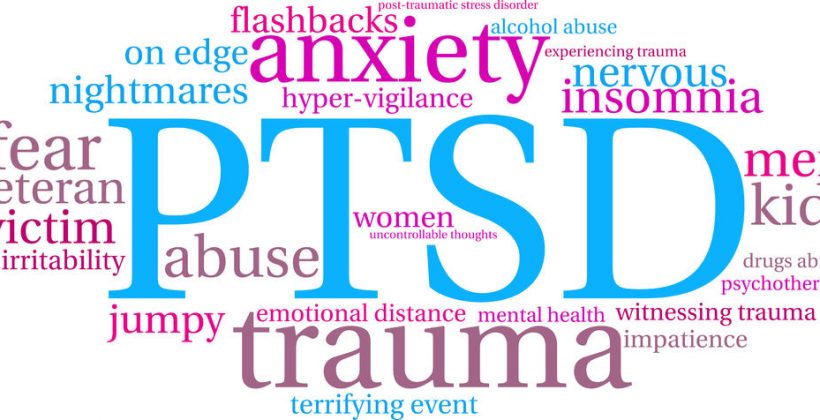Post-traumatic stress disorder (PTSD) can be a debilitating condition, particularly when it is severe. This comprehensive guide will provide you with information on all aspects of severe PTSD, from diagnosis to treatment options. If you or someone you love is struggling with severe PTSD, this guide will provide you with the information you need to get the help you need.
Contents
What Is Severe PTSD?

Severe PTSD is a debilitating anxiety disorder that can occur after experiencing or witnessing a traumatic event. Symptoms may include flashbacks, nightmares, avoidance of activities that remind the person of the event, and increased anxiety and arousal.
People with severe PTSD often have difficulty functioning in day-to-day life and may feel detached from friends and family members. They may also suffer from depression, substance abuse, and other mental health problems. Treatment typically involves exposure therapy, cognitive behavioral therapy, and medication.
Sometimes, people with severe PTSD are unable to return to their previous level of functioning and may require long-term care. With treatment, however, many people with severe PTSD can improve their symptoms and live relatively normal lives.
What Causes Severe PTSD?
Reasons, why a person may develop severe PTSD, are known. Severe PTSD is not caused by any one factor, but rather by the interaction of many different things. Some of these are
Genetics
One of the main causes of severe PTSD is family genetics. If you have a close relative, such as a parent or sibling, who suffers from PTSD, you are more likely to develop the condition yourself. This suggests that there may be a genetic predisposition to the disorder.
Gender
Women are more likely to develop PTSD than men, although it is not clear why this is the case. It may be because women are more likely to experience certain types of traumas, such as sexual assault and child abuse. Women may also be more likely to experience multiple traumas throughout their lives.
Type of Trauma
The type of trauma you experience can also play a role in the development of PTSD. Some types of traumas, such as combat, are more likely to lead to disorder than others. This may be due to the intensity of the trauma or the length of time you were exposed to it.
Age
Age is also a factor in the development of PTSD. Children and adolescents are more likely to develop the disorder than adults, although this may be due in part to the fact that they are more likely to experience certain types of traumas,
Job Loss or Divorce
Losing a job or getting divorced can also lead to the development of PTSD. These events can be very stressful and can cause major life changes.
Abuse
Some studies have found that people who experienced abuse as children are more likely to develop PTSD as adults. This may be because childhood abuse can lead to feelings of powerlessness and a loss of control.
Symptoms of Severe PTSD

Some of the signs of severe PTSD are:
Reliving the Event
One of the most common symptoms of PTSD is reliving the event, also known as flashbacks. Flashbacks can take many different forms, but they all involve re-experiencing the trauma in some way. You may have intrusive thoughts about the event or you may feel like you are going through it again. You may see, hear, or smell things that remind you of the event. You may also have physical reactions, such as a racing heart or sweating.
Avoidance
Another common symptom of PTSD is avoidance. People with PTSD often try to avoid anything that reminds them of the trauma. They may avoid people, places, activities, and thoughts that trigger memories of the event. In some cases, people with PTSD may avoid talking about the event altogether.
Negative Changes in Thoughts and Feelings
PTSD can also cause negative changes in your thoughts and feelings. You may feel hopeless, guilt-ridden, or depressed. You may lose interest in activities you once enjoyed. You may also have difficulty trusting people. These negative changes can make it hard to function in day-to-day life.
Anxiety and Arousal
People with PTSD often experience symptoms of anxiety and arousal. They may have trouble sleeping or concentrating. They may be easily startled. They may also feel on edge or irritable. These symptoms can make it hard to perform everyday tasks.
Intrusive Thoughts
One of the most common symptoms of PTSD is intrusive thoughts. Intrusive thoughts are unwanted, recurring thoughts about the trauma. They can take many different forms, but they all involve reliving the event in some way. You may have recurrent images or memories of the event. You may also have nightmares or flashbacks. These thoughts can be so distressing that they interfere with your daily life.
Constant Vigilance
Another common symptom of PTSD is constant vigilance. People with PTSD often feel on edge or irritable. They may have trouble sleeping or concentrating. They may also be easily startled. These symptoms can make it hard to perform everyday tasks. Sometimes, people with PTSD may also have problems with alcohol or drug abuse.
PTSD Treatment

There are many different types of treatment for PTSD, but the most effective approach is a combination of medication and therapy.
Medication
Several types of medication can be used to treat PTSD. The most common type is antidepressant medication, which can help to improve mood and reduce symptoms of anxiety. Antidepressants are often prescribed in combination with the second type of medication, such as an anti-anxiety medication or a sleep aid.
Other types of medications are also sometimes used to treat PTSD. These include antipsychotic medication, beta-blockers, and mood stabilizers.
Therapy
Many different types of therapy can be used to treat PTSD. The most common type is cognitive-behavioral therapy, which helps people to identify and change the negative thoughts and behaviors that are associated with the disorder. Other types of therapy, such as exposure therapy and eye movement desensitization and reprocessing (EMDR), can also be effective in treating PTSD.
Some of these medications also come with side effects, so it’s important to talk to your doctor about the risks and benefits of each medication.
Support Groups
Another important part of treatment for PTSD is support from family and friends. Support groups can also be a helpful resource for people with PTSD. These groups provide a place for people to share their experiences and learn from others who are going through similar things.
There are many online and offline support groups for people with PTSD. Some of these groups are specific to certain types of trauma, such as sexual assault or military combat. Others are general support groups for people with any type of PTSD.
With the right treatment, many people with PTSD can recover and live healthy, productive lives. If you think you may have PTSD, it’s important to seek help from a qualified mental health professional.
PTSD Prevention

There is no sure way to prevent PTSD, but there are things that can help reduce your risk of developing the disorder. If you’ve experienced a traumatic event, it’s important to get treatment as soon as possible. This can help you deal with the event in a healthy way and prevent the development of PTSD.
It’s also important to build a support system of family and friends who can offer emotional support during difficult times. This support system can provide a sense of stability and help you cope with stress.
Finally, it’s important to take care of yourself both physically and emotionally. This includes:
Getting Regular Exercise
There are many benefits to regular exercise, and one of them is reducing your risk of PTSD. Exercise can help to improve your mood and reduce stress. It can also help to improve your sleep, which can be a major problem for people with PTSD.
Eating Good Food
An important part of recovery from severe PTSD is eating good food. A nutritious diet helps the body to heal and provides the energy needed to cope with the symptoms of PTSD. There are no specific foods that are known to help with PTSD, but eating a healthy diet is important for overall physical and mental health.
Some people with PTSD find that their appetite changes and they either lose weight or gain weight. It is important to listen to your body and eat when you are hungry. If you are having trouble eating, there are some things you can do to make it easier.
- Drink plenty of fluids.
- Make sure you are eating enough calories.
- Eat small, frequent meals throughout the day instead of large meals.
- Avoid foods that are high in fat, sugar, or caffeine.
- Eat foods that are easy to digest.
- Talk to a doctor or dietitian if you are having trouble eating or if you have concerns about your diet.
Getting Adequate Sleep
An important part of PTSD recovery is getting enough sleep. People with PTSD often have trouble sleeping, which can make the symptoms of the disorder worse. There are a few things you can do to help yourself get better sleep:
- Go to bed and wake up at the same time every day.
- Create a relaxing bedtime routine.
- Avoid caffeine, alcohol, and nicotine before bed.
- Exercise regularly, but not right before bed.
- Keep a journal to help clear your mind before bedtime.
- Talk to your doctor if you are having trouble sleeping. They may be able to prescribe medication to help you sleep.
Connecting with Nature
Another way to reduce your risk of PTSD is to spend time in nature. Research has shown that spending time in nature can help to reduce stress, anxiety, and depression. It can also help to improve sleep quality.
There are many ways to connect with nature, such as:
- Take a walk in the park.
- Go for a hike in the woods.
- Sit by a lake or river.
- Plant a garden.
- Spend time doing an outdoor activity that you enjoy.
If you live in an urban area, there are still plenty of ways to connect with nature. You can visit a nearby park or green space, or even bring some plants into your home.
Taking Breaks From the News
If you’re constantly exposed to news about traumatic events, it can increase your risk of developing PTSD. To reduce this risk, it’s important to take breaks from the news and give yourself a break from thinking about the event.
There are a few things you can do to reduce your exposure to the news:
- Set limits on how much news you consume each day.
- Choose a specific time of day to catch up on the news, and stick to that schedule.
- Avoid watching or reading the news right before bedtime.
- Make sure you’re getting your news from reliable sources.
- Talk to someone if you find yourself feeling overwhelmed by the news.
Conclusion
Severe PTSD can have a profound and lasting impact on an individual’s life. It is a serious condition that should be treated by qualified professionals. With proper treatment, many people with severe PTSD can recover and lead productive lives. Also, make sure to have a support system in place, as it can be difficult to manage symptoms on your own.
Sometimes, people with PTSD don’t even realize they have it. If you have any symptoms of PTSD or think you might have the condition, talk to a doctor or mental health professional. It’s important to get help early on to prevent the condition from getting worse.
Hope this article was of help to you! If you are suffering from mental health disorders, you may seek help from Therapy Mantra. We have a team of highly trained and experienced therapists who can provide you with the tools and skills necessary for overcoming mental health disorders. Contact us today to schedule an online therapy or download our free Android or iOS app for more information.


